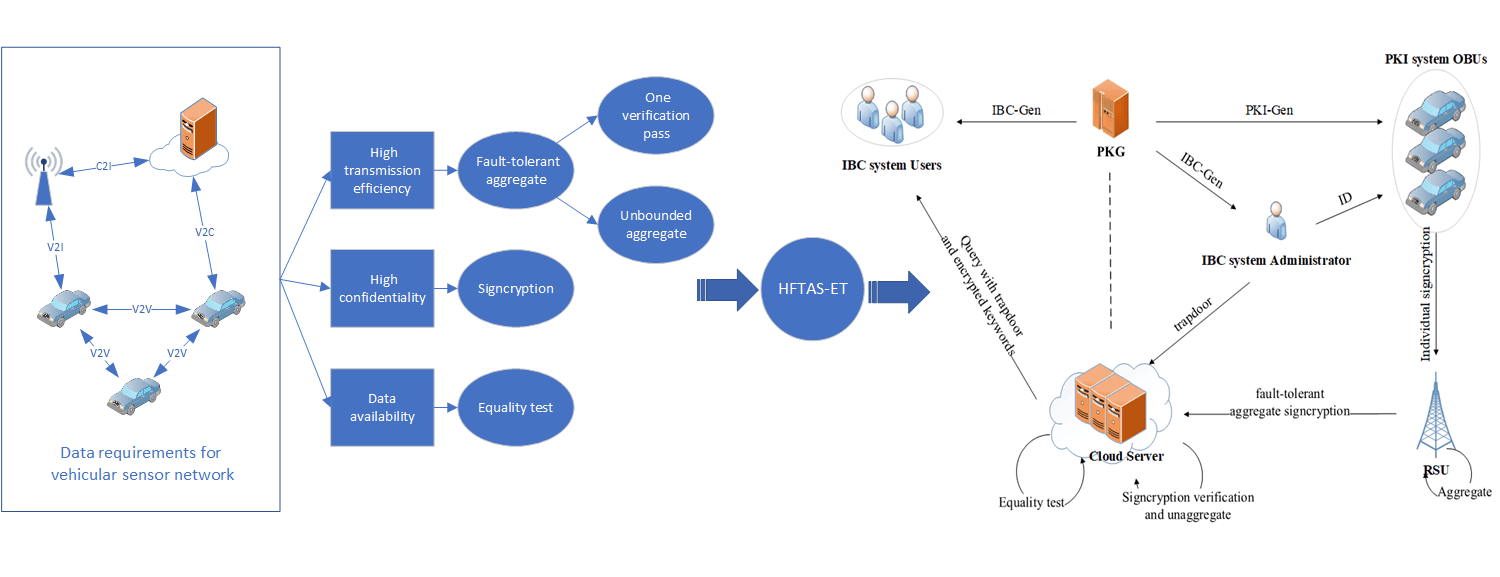 Open Access
Open Access
ARTICLE
Heterogeneous Fault-Tolerant Aggregate Signcryption with Equality Test for Vehicular Sensor Networks
1 Network and Data Security Key Laboratory of Sichuan Province, University of Electronic Science and Technology of China, Chengdu, 610054, China
2 Department of Mathematics, Chaudhary Charan Singh University, Meerut, 250004, India
* Corresponding Author: Saru Kumari. Email:
(This article belongs to the Special Issue: Information Security Practice and Experience: Advances and Challenges)
Computer Modeling in Engineering & Sciences 2023, 137(1), 555-575. https://doi.org/10.32604/cmes.2023.026808
Received 26 September 2022; Accepted 15 December 2022; Issue published 23 April 2023
Abstract
The vehicular sensor network (VSN) is an important part of intelligent transportation, which is used for real-time detection and operation control of vehicles and real-time transmission of data and information. In the environment of VSN, massive private data generated by vehicles are transmitted in open channels and used by other vehicle users, so it is crucial to maintain high transmission efficiency and high confidentiality of data. To deal with this problem, in this paper, we propose a heterogeneous fault-tolerant aggregate signcryption scheme with an equality test (HFTAS-ET). The scheme combines fault-tolerant and aggregate signcryption, which not only makes up for the deficiency of low security of aggregate signature, but also makes up for the deficiency that aggregate signcryption cannot tolerate invalid signature. The scheme supports one verification pass when all signcryptions are valid, and it supports unbounded aggregation when the total number of signcryptions grows dynamically. In addition, this scheme supports heterogeneous equality test, and realizes the access control of private data in different cryptographic environments, so as to achieve flexibility in the application of our scheme and realize the function of quick search of plaintext or ciphertext. Then, the security of HFTAS-ET is demonstrated by strict theoretical analysis. Finally, we conduct strict and standardized experimental operation and performance evaluation, which shows that the scheme has better performance.Graphic Abstract

Keywords
Cite This Article
 Copyright © 2023 The Author(s). Published by Tech Science Press.
Copyright © 2023 The Author(s). Published by Tech Science Press.This work is licensed under a Creative Commons Attribution 4.0 International License , which permits unrestricted use, distribution, and reproduction in any medium, provided the original work is properly cited.


 Submit a Paper
Submit a Paper Propose a Special lssue
Propose a Special lssue View Full Text
View Full Text Download PDF
Download PDF Downloads
Downloads
 Citation Tools
Citation Tools